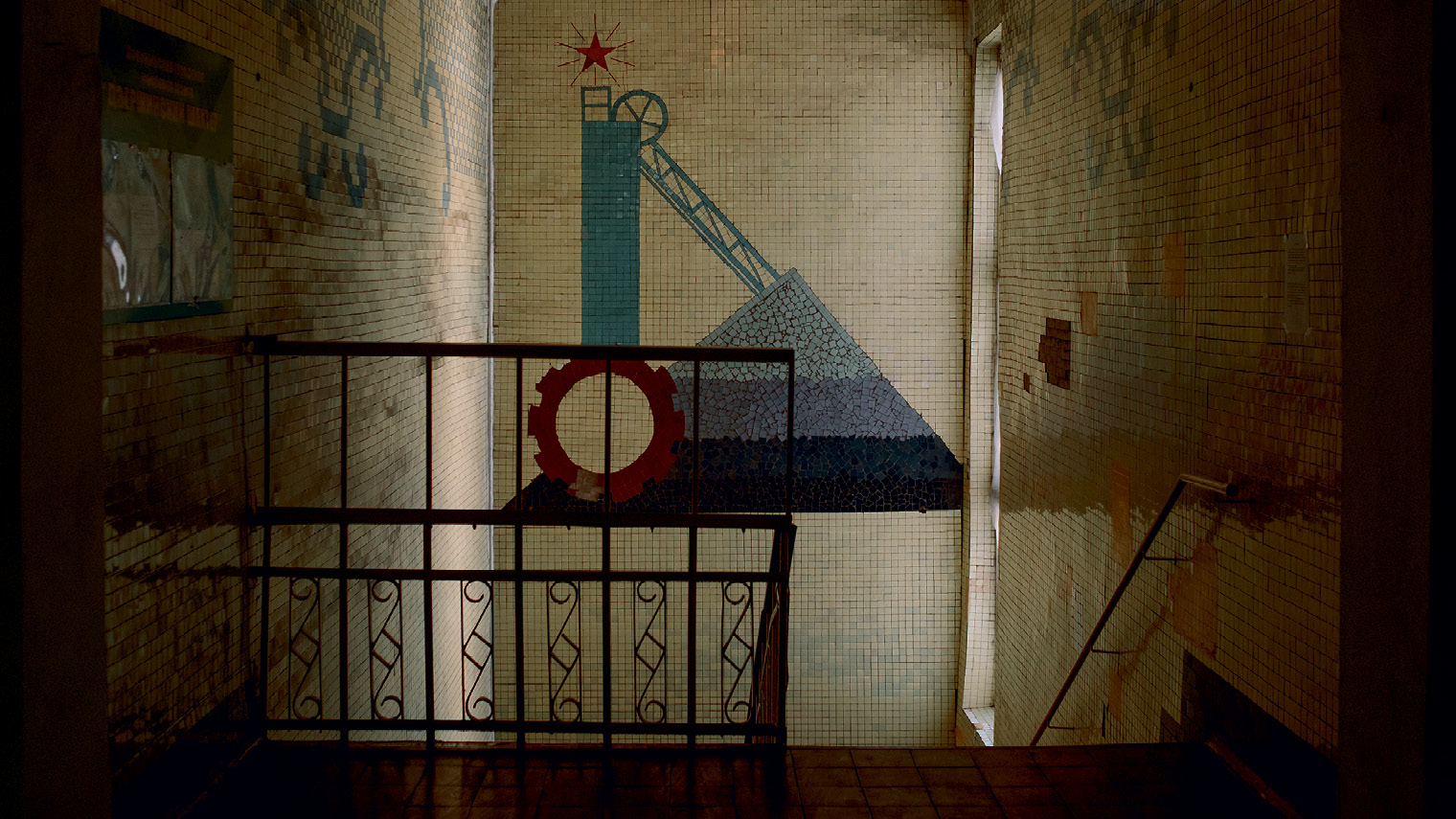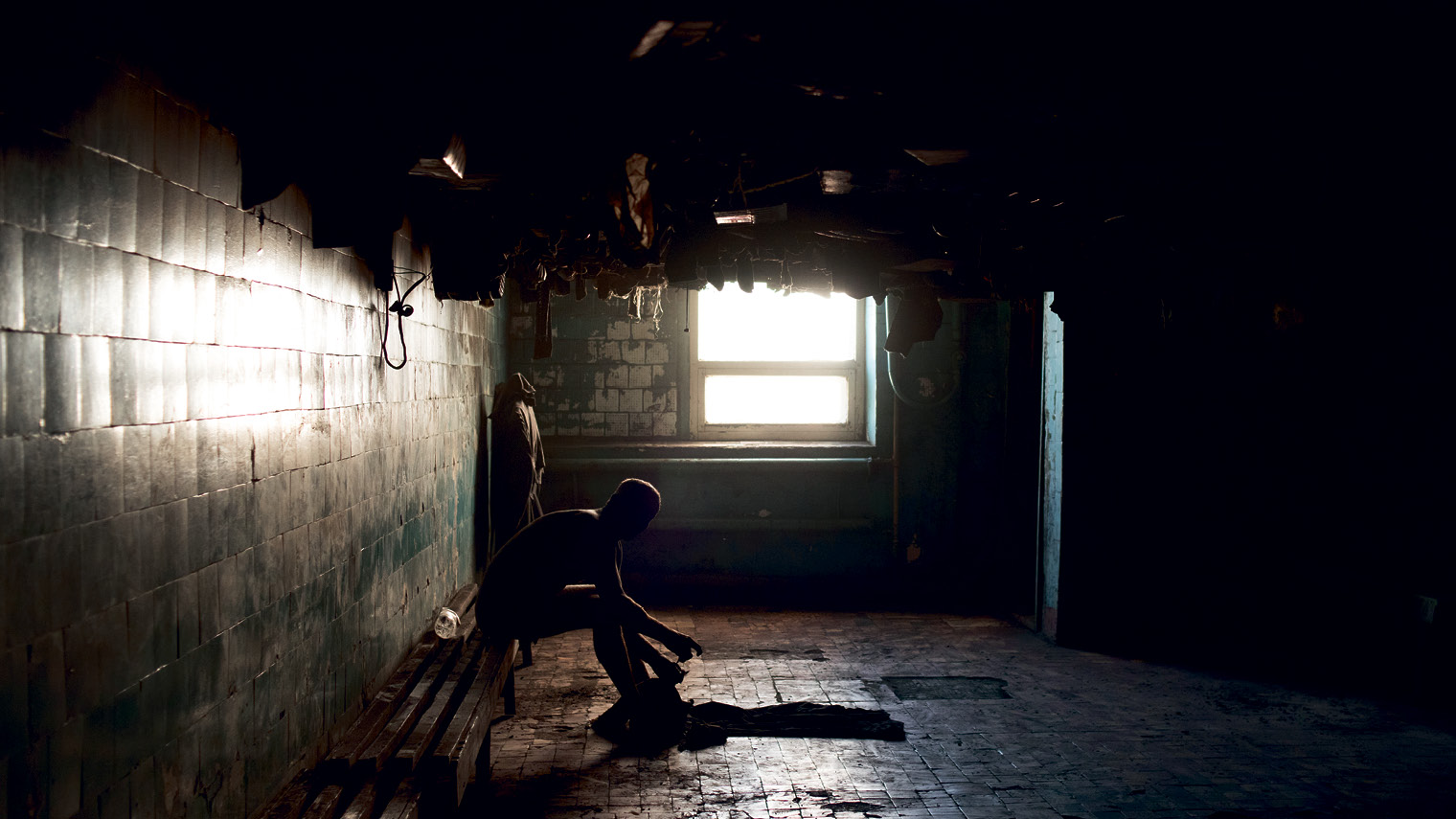Photography by Chris Nunn
Dzerzhynsk is a mining town in the Donetsk region of eastern Ukraine, just a few kilometres from the frontline of the civil war. Under the Ukrainian government’s ‘decommunisation’ programme, it was renamed to Toretsk in February.
In 2014 it fell to Russian separatists, but was later recaptured by government forces. Since the conflict started, most of the major routes in and out are blocked. The main road to Konstantinovka, the nearest city, is in terrible condition, almost cutting the town off from its neighbours, and often the only traffic is military – the occasional artillery piece being towed to the front, from time to time an armoured vehicle.
At times the town is hit by shelling as the war moves around it. Once, the Toretskaya mine was hit, and miners were trapped underground for 30 hours. But the mines stay open, for now. Generations of men have gone down the pits, but a combination of global market conditions and the uncertainty of Ukraine’s conflict mean that the miners’ livelihoods and identities are at risk. There were five mines in this town; now only two are left. There are few other prospects for the town’s young people.
- Twenty-two year-old Vlad (top left) has been working down the mine since he was 18. Before the war began, his monthly pay was £765 a month; now, with wages down and the Ukrainian hryvnia massively devalued, he makes around £140 a month. Before, the family used to take trips to the sea. Now, that is a distant memory.
- VLAD: “The spirit of miners is really strong. Our profession keeps us together, sometimes our views are different, but it’s only within work. The conflict never affected our relationships. It’s even made us closer to each other. When mine was hit and we stayed under the ground for more than 24 hours, every miner was worried about his family, so we tried to speak to each other, to give each other support. “I’m very positive. I hope our mines will have a good future. But if things are going to be the same, the miners don’t have a future at all. They’ve been stuck in the mud… For the last two years we are not living, we are surviving.”
- The mine is 810m deep at its lowest point. Reaching the bottom takes nearly 10 minutes, with 12 miners at a time crammed into the lift. Before going down into the pit, each miner gets two tokens. One goes into a box on the lift down, the second is kept on their helmet, to be collected on their way out.
- Mining is more than just a job; it is an identity. The camaraderie of the men and women who still struggle down the pit is strong, but the industry is withering. If nothing changes, it will die, leaving the economy of the region with little left to lean on, says Lidia Bagray, a young miner at Severnaya Mine.
- LIDIA: “Not everyone can be a miner, but here, I think we get it from our mother’s milk. The mining spirit is in the courage, responsibility, in caring for your neighbour, the hope in your eyes – all that is present in each honest worker. “In our town, people have lost that positive attitude. The war goes on, the mine is about to be closed. There is no work, people are forced to leave in search of a better life, and unfortunately there is very little faith in a brighter future. When the mine shut down in Artem [another village], it just died. It was deserted, in ruins, and it happened within five to ten years. I think if the mine closed, then Toretsk town would too.”








